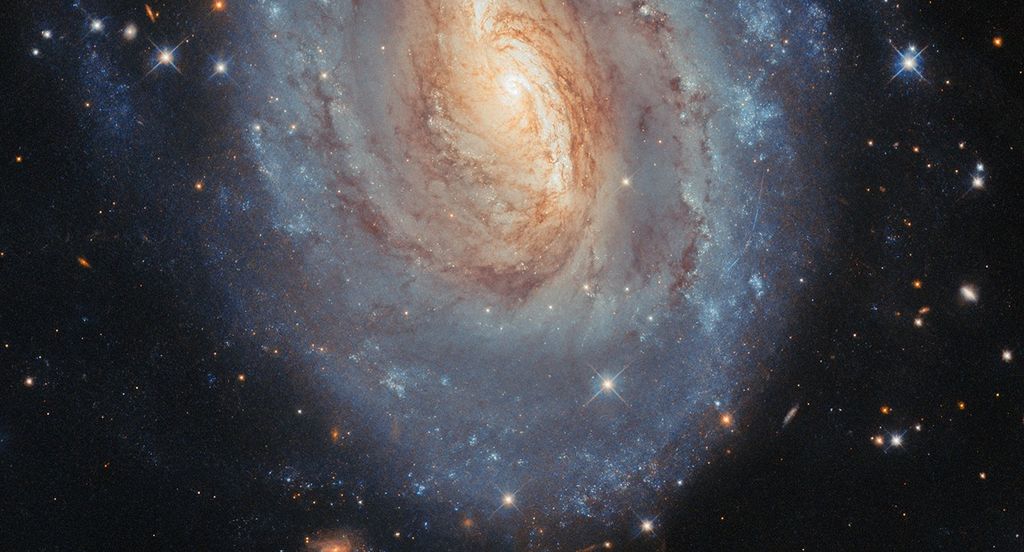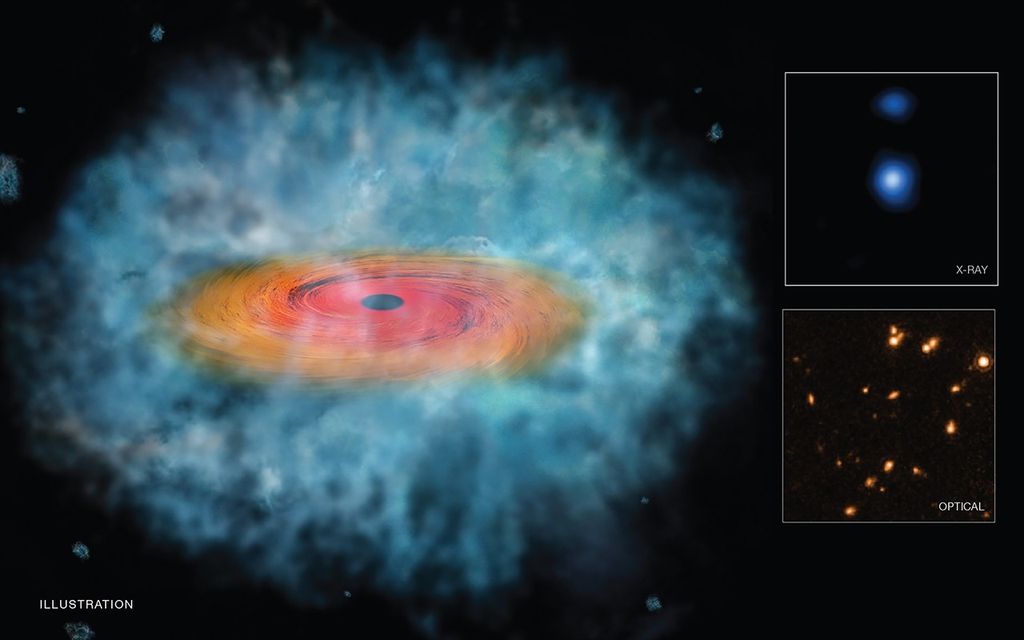1 min read
Zoom into VY CMa

This zoom into VY Canis Majoris is a combination of Hubble imaging and an artist's impression. The left panel is a multicolor Hubble image of the huge nebula of material cast off by the hypergiant star. This nebula is approximately a trillion miles across. The middle panel is a close-up Hubble view of the region around the star. This image reveals close-in knots, arcs, and filaments of material ejected from the star as it goes through its violent process of casting off material into space. VY Canis Majoris is not seen in this view, but the tiny red square marks the location of the hypergiant, and represents the diameter of the solar system out to the orbit of Neptune, which is 5.5 billion miles across. The final panel is an artist's impression of the hypergiant star with vast convection cells and undergoing violent ejections. VY Canis Majoris is so large that if it replaced the Sun, the star would extend for hundreds of millions of miles, to between the orbits of Jupiter and Saturn.
About the Object
- R.A. PositionR.A. PositionRight ascension – analogous to longitude – is one component of an object's position.07:22:58.33
- Dec. PositionDec. PositionDeclination – analogous to latitude – is one component of an object's position.-25:46:03.2
- ConstellationConstellationOne of 88 recognized regions of the celestial sphere in which the object appears.Canis Major
- DistanceDistanceThe physical distance from Earth to the astronomical object. Distances within our solar system are usually measured in Astronomical Units (AU). Distances between stars are usually measured in light-years. Interstellar distances can also be measured in parsecs.Approximately 5,000 light-years
- DimensionsDimensionsThe physical size of the object or the apparent angle it subtends on the sky.Roughly 35 arcseconds (0.85 light-years or 0.25 parsecs) across
About the Data
- Data DescriptionData DescriptionProposal: A description of the observations, their scientific justification, and the links to the data available in the science archive.
Science Team: The astronomers who planned the observations and analyzed the data. "PI" refers to the Principal Investigator.The Hubble image was created from HST data from proposals: 7304 (R. Humphreys)
- InstrumentInstrumentThe science instrument used to produce the data.WFPC2
- Exposure DatesExposure DatesThe date(s) that the telescope made its observations and the total exposure time.22 March 1999, 13 June 2005
- FiltersFiltersThe camera filters that were used in the science observations.F410M, F547M, F656N, F1042M
- Object NameObject NameA name or catalog number that astronomers use to identify an astronomical object.VY CMa
- Object DescriptionObject DescriptionThe type of astronomical object.Massive Red Hypergiant Star
- Release DateMarch 4, 2021
- Science ReleaseHubble Solves Mystery of Monster Star’s Dimming
- CreditNASA, ESA, Roberta Humphreys (UMN), Joseph Olmsted (STScI)

These images are a composite of separate exposures acquired by the WFPC2 instrument on the Hubble Space Telescope. Several filters were used to sample narrow wavelength ranges. The color results from assigning different hues (colors) to each monochromatic (grayscale) image associated with an individual filter. In this case, the assigned colors are: Blue: F410M Green: F547M Orange: F656N Red: F1042M

Share
Details
Claire Andreoli
NASA’s Goddard Space Flight Center
Greenbelt, Maryland
claire.andreoli@nasa.gov




































